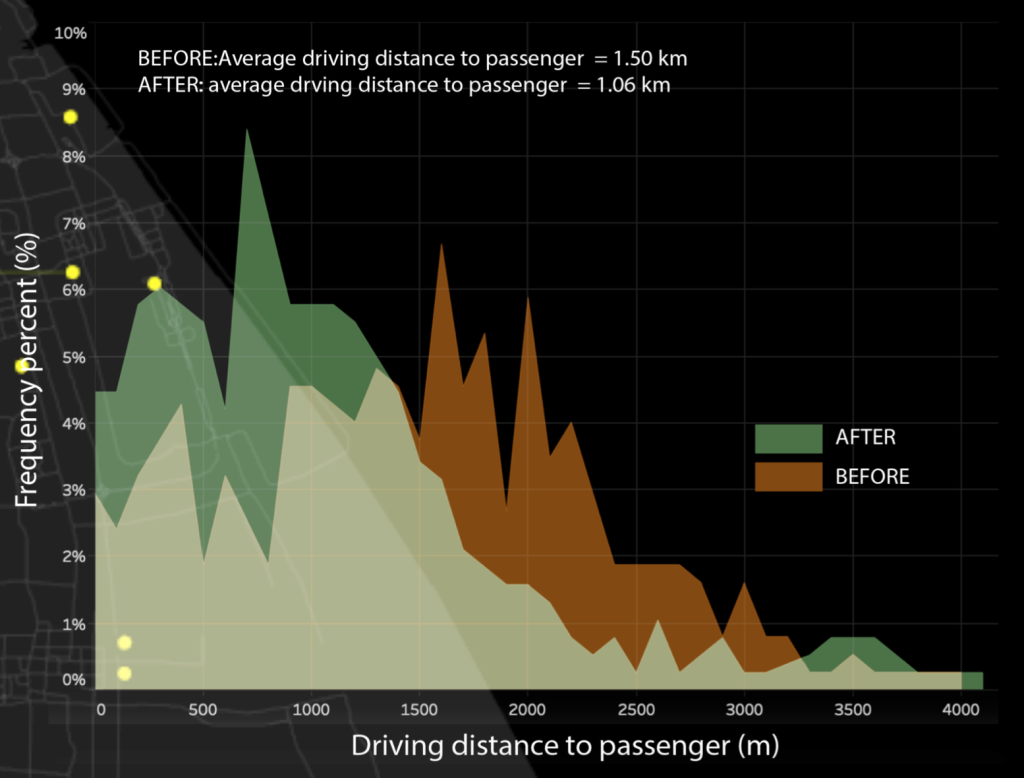This study was conducted by JB in 2019 under the supervision of Prof. Zhiqiang Siegfried Wu and Prof. Otthein Herzog at China Intelligent Urbanization Center. The aim of the study was to explore ways to improve the operation efficiency of the traditional taxi system and is consisted of two parts:
- Evaluated the efficiency of the taxi service during rush hours in Shanghai using taxi GPS data.
- Optimized the taxi service under the control of a gravity-based taxi dispatch system.
The taxi trajectory dataset was from SODA and processed with python and QGIS. The simulation platform was built with GAMA.
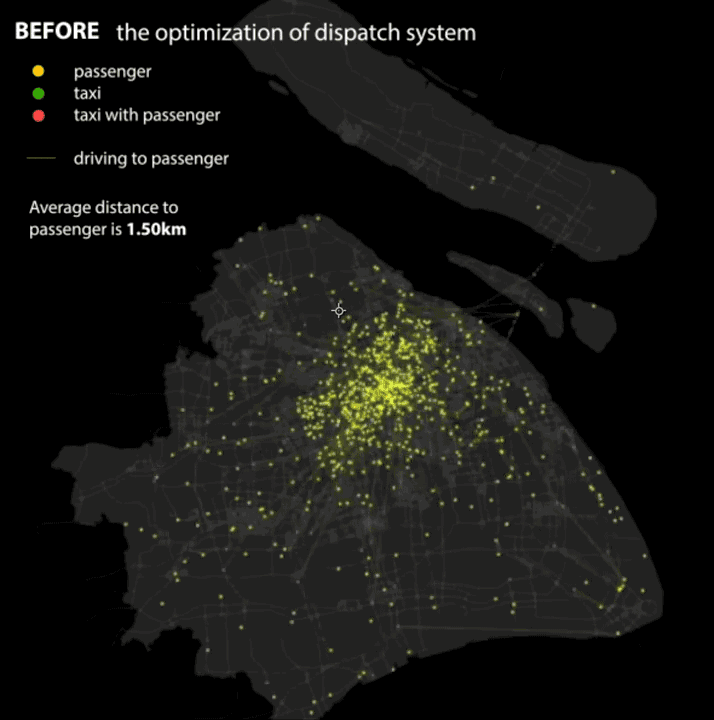
Taxi GPS data analysis
The taxi GPS dataset we used in this study recorded the GPS points of each taxi of Johnson and Johnson taxi company every 10 seconds in March of 2016. The raw GPS point data is extracted and processed into rides with passengers (loaded rides) and rides without passengers (empty rides) on Mondays from 6 a.m. -10 a.m. Before diving deep into the service efficiency, we could have a general picture of the taxi service during rush hour (7 a.m. – 9 a.m.) from the perspectives of distribution of origin and destination, flow network and road speed.
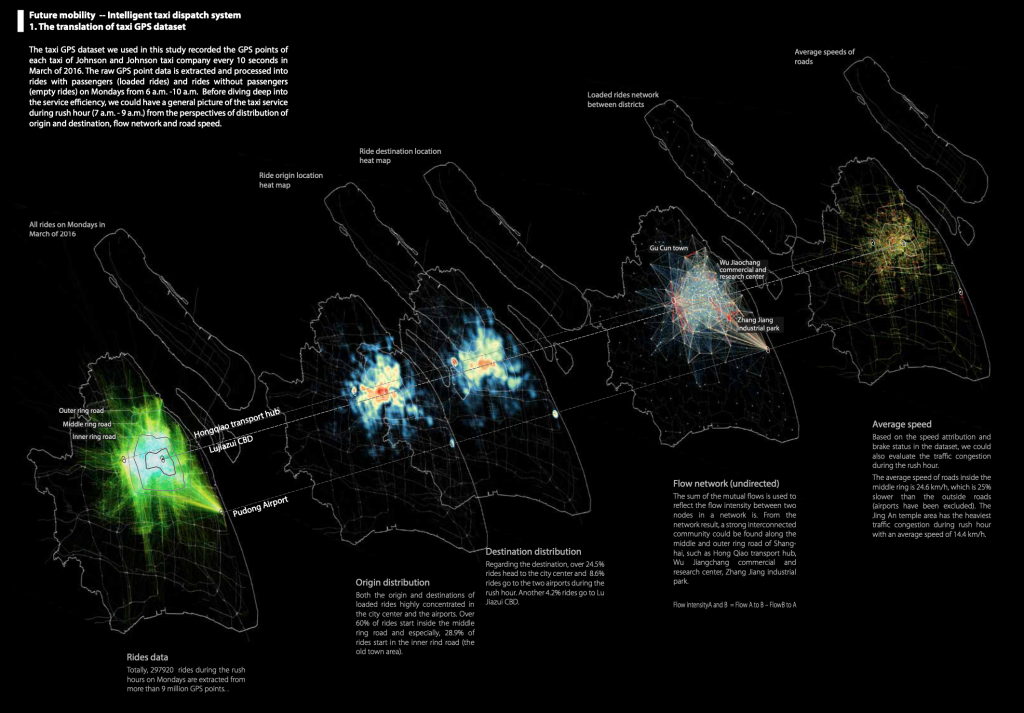
Why is it so difficult to find a taxi during the rush hour?
Based on the taxi GPS dataset in Shanghai, we further evaluated the taxi service efficiency with multiple indicators, such as vacancy rate, empty rides distribution, taxi surplus*, etc. Two findings are worth mentioning here: 1) Taxis travel a long distance to find next passengers; 2) There exists an extreme unbalanced demand and supply among districts.
“Taxi surplus” is an index to evaluate the in and out balance of a block in a time period. The “export” corresponds to the taxis starting the loaded trips from the block, while the “import” corresponds to the taxis ending the loaded trips in the districts:
Surplus of district_i = Starting trip_i – ending trip_i
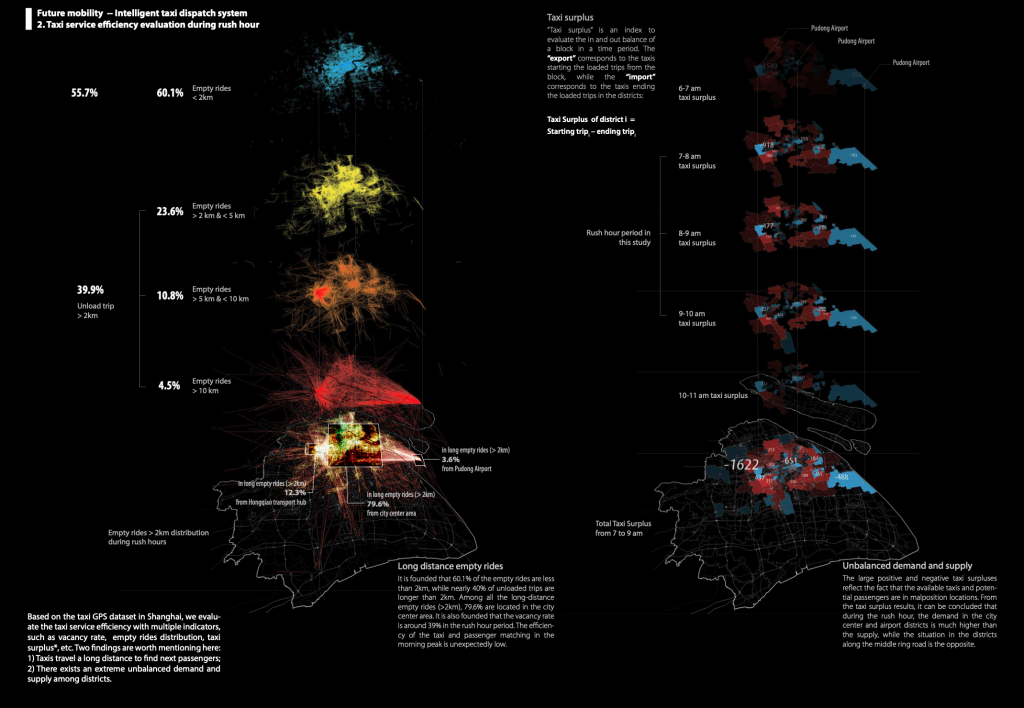
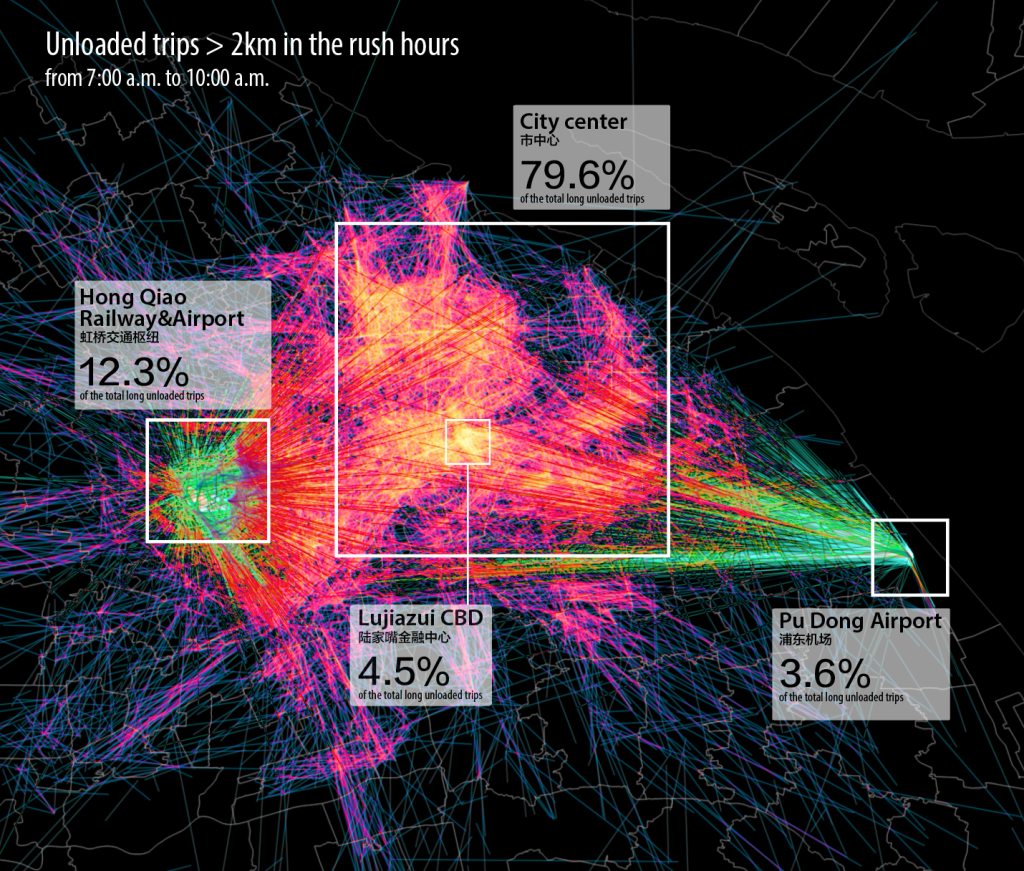
Gravity-based dispatch system
From the taxi service efficiency evaluation results, we found that there exist an extremely unbalanced taxi demand and supply distribution. And positive surplus districts and negative surplus districts are usually very close to each other, which means that the unbalanced demand-supply condition could be mitigated by dispatching taxis among the adjacent districts. However, taxi drivers couldn’t efficiently locate the nearest high-demand districts, which explained why the empty rides are usually long in the rush hour. In this research, we didn’t take the interest of the individual taxi driver into consideration. Instead, we focus more on the collective benefits and the global efficiency of the taxi service. Thus, we presume that the taxi system will become driverless in the future. Under this scenario, we develop an intelli- gent taxi dispatch system to improve the efficiency of the taxi service and use an agent-based model to test the optimization results.
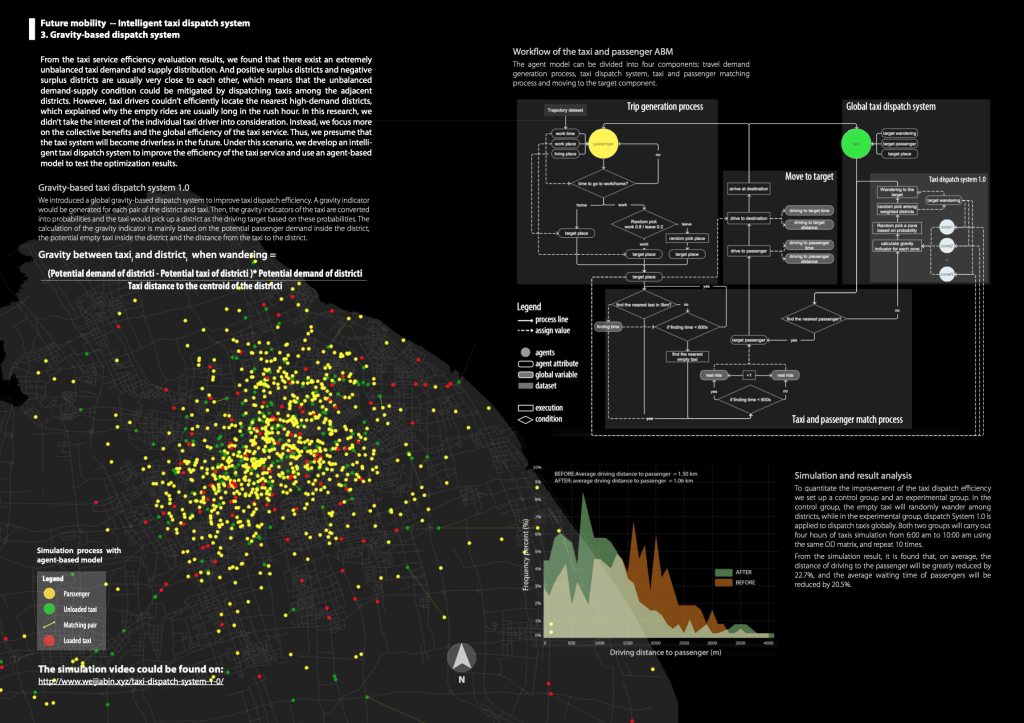
After applying the gravity-based dispatching system, the average distance to the next passenger reduce by 29%.
